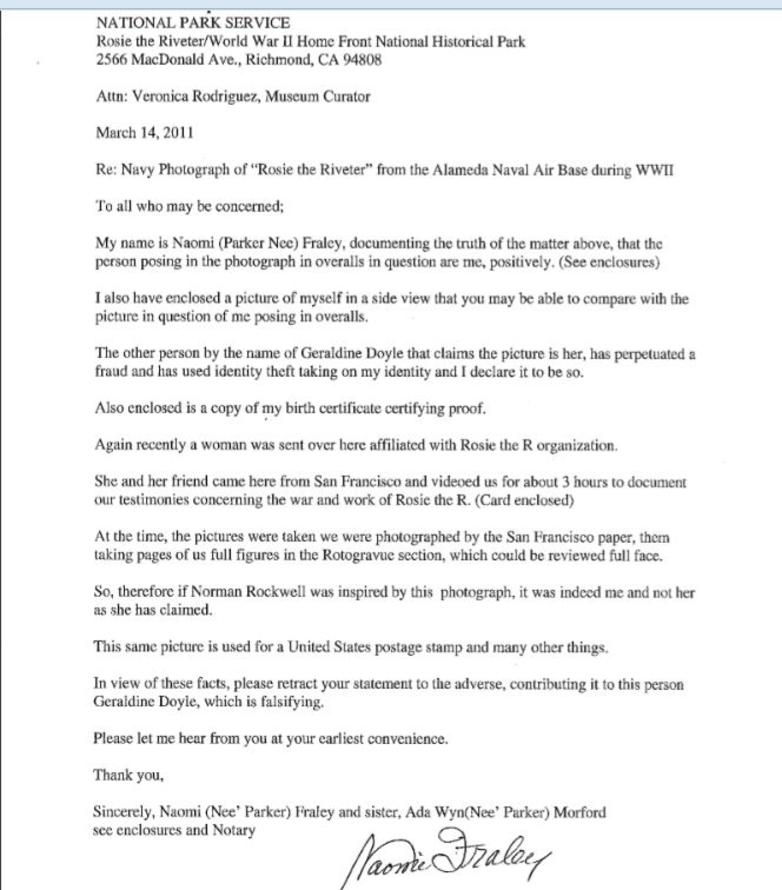Naomi Parker Fraley, The Real Rosie the Riveter, Dies at 96
- Justine Mamaradlo
- Feb 20, 2018
- 3 min read

Naomi Parker Fraley next to the Rosie the Riveter poster.
On Saturday, January 20, 2018, Naomi Parker Fraley died at age 96. She was in Longview, Washington.
During the early years of World War II, the Rosie the Riveter poster was a recruitment tool that was used to call women to workforces and encourage them to help out with war efforts, something that was not very common for them during the time. Today, the poster is a huge symbol for female empowerment, with it being referenced in pop culture, being used in recent protests, and even being remade with women of diverse backgrounds in the place of the original Rosie.
However, the true identity behind what inspired this iconic poster was often debated about over the years. For a time, most believed that Rosie was inspired by Geraldine Hoff Doyle, who worked in a Navy machine shop during the war. Still, well deserved credit for being the face behind the famous Rosie would not be given until 70 years after the poster was first seen.
Thanks to the efforts of Dr. James J. Kimble, an associate professor of communication and the arts at Seton Hall University in New Jersey, a credible name was finally matched with the person in the poster – Naomi Parker Fraley.
Rosie the Riveter was created by J. Howard Miller in 1942, with another version of it produced by Norman Rockwell 1943. There is this particular photo that was initially released in various newspapers in 1942 of a woman operating a lathe. It is said to be the likely inspiration for Miller’s poster. In later years, people would claim various different women to be the alleged “Real Rosie” in an attempt to identify the woman behind the poster. The common defense for these claims was that those women were supposedly the woman in the photo that eventually transpired as Rosie the Riveter.

The photo which inspired the iconic, Rosie the Riveter poster.
Kimble was skeptical of these claims. He went ahead and took a closer look at the original photograph. Through his research, he came across a copy of the photo with the original newspaper caption taped onto the back. Within the caption was the true name of the woman working with the machine:
“Pretty Naomi Parker is as easy to look at as overtime pay on the week’s check. And she’s a good example of an old contention that glamor is what goes into the clothes, and not the clothes. Pre-war fashion frills are only a discord in war-time clothing for women. Naomi wears heavy shoes, black suit, and a turban to keep her hair out of harm’s way (we mean the machine, you dope).”
An attempt to gain rightful credit for the identity of the person in the photo was made earlier by Naomi herself. She was at a reunion for women who had worked during the war when she recognized this picture of herself. Except the caption below it did not state her name – it stated Geraldine Hoff Doyle’s. Fraley communicated with the National Park Service in an attempt to fix the error, but they did not believe her story, despite her possessing the original photo with the original caption below it mentioning her name.

The original newspaper clipping that was kept in Naomi’s possession containing the original photo that inspired Rosie the Riveter. (Credit: John D. Fraley)

Naomi’s letter to the National Park Service concerning the identity of the woman in the WWII Era photo. (Credit: John D. Fraley)

The National Park Service's response, denying Naomi's claims. (Credit: John D. Fraley)
Fortunately in 2016, Dr. Kimble released his findings in the journal, Rhetoric & Public Affairs. This finally allowed Naomi Parker Fraley to claim the well deserved credit to the identity of the woman in the photo, the very photo that inspired the creation of Rosie the Riveter. At long last, there was substantial evidence for who the woman behind the iconic poster was.
The World Herald conducted an interview with Naomi in 2016. When asked about how it felt to finally be known publicly as Rosie the Riveter, she cried, “Victory! Victory! Victory!”
Less than two years after her newly attained fame, Naomi Parker Fraley passed away. Though she dies knowing that she was able to contribute to the creation of a symbol that continues to inspire and empower women of all backgrounds and upbringings today.
In an interview done with People magazine, Naomi said, “The women of this country these days need some icons. If they think I’m one, I’m happy.”
References







Comments